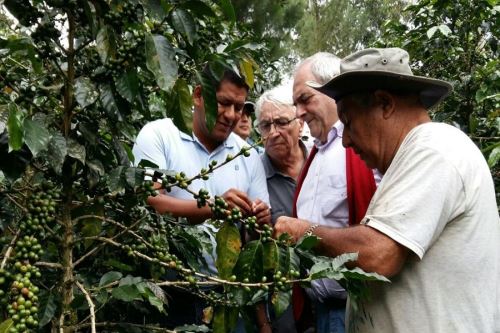In the framework of Peruvian Coffee Day, which is commemorated today, the
Ministry of Agrarian Development and Irrigation (Midagri) reported that national coffee has reached 52 international markets so far this year, exporting 101,898 tons thanks to the efforts of producers and the quality of these beans that have conquered the main international markets.
These actions go hand-in-hand with field work, which focuses on providing phytosanitary support, as well as ensuring the health and safety of Peruvian agricultural products.
It should be noted that, globally, Peruvian coffee has the opportunity to be traded in 88 international markets.
Due to its great potential and the efforts of various sectors from the production chain, exports continue to grow.
In 2023, more than 155,036 tons were certified, mainly to the United States (39,390 MT), Germany (21,047 MT), Belgium (16,450 MT), and Colombia (12,385 MT).
In order to mitigate the risks associated with the emergence of pests, such as Hemileia vastatrix, Hypothenemus hampei, and Mycena citricolor which can affect coffee plantations, Senasa strengthened its phytosanitary actions in producing regions such as San Martin; Junin; Cajamarca; Amazonas; Cusco; Huanuco; Piura; and the Valley of Apurimac, Ene, and Mantaro Rivers (Vraem); among others.
During this year, phytosanitary assessments were conducted on 8,880 hectares. To complement these actions, more than 10,200 coffee producers were trained to implement Integrated Pest Management (IPM) on their farms, thus aiming to obtain greater profitability from their crops.
One of the phytosanitary factors affecting coffee production in Peru is the yellow rust pest (Hemilea vastatrix).
The main measure to counteract this phytosanitary issue is for coffee growers, in a timely manner, to use tolerant or resistant varieties, perform actions such as sanitary and renewal pruning, maintain adequate spacing and shade, conduct soil analysis, and apply fertilization, among other actions to mitigate the pest's impact in the field. Additionally, Senasa and other agricultural entities strengthen producers' skills in crop management.

On the other hand, to combat the coffee borer, a pest that perforates the fruit, reducing the yield and quality of beans and using biological control agents such as Beauveria bassiana is recommended -a fungus that is a natural enemy of this insect and helps reduce the use of chemical pesticides.
To this end, Senasa has offices nationwide with trained personnel, where organized producers can request technical support and act in a timely manner.
As part of the celebrations for Peruvian Coffee Day, Midagri hosts the "Yo tomo Café Peruano" (I drink Peruvian Coffee) festival from August 22 to 25 at La Rambla shopping center in Lima's San Borja district.
It brings together more than 50 producers from various Peruvian regions. The event will feature by-products and free tastings.
(END) NDP/CNA/MVB
Publicado: 23/8/2024